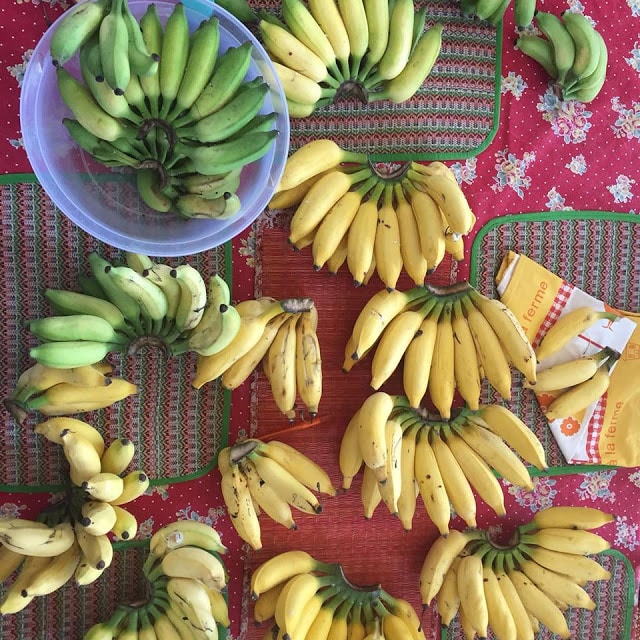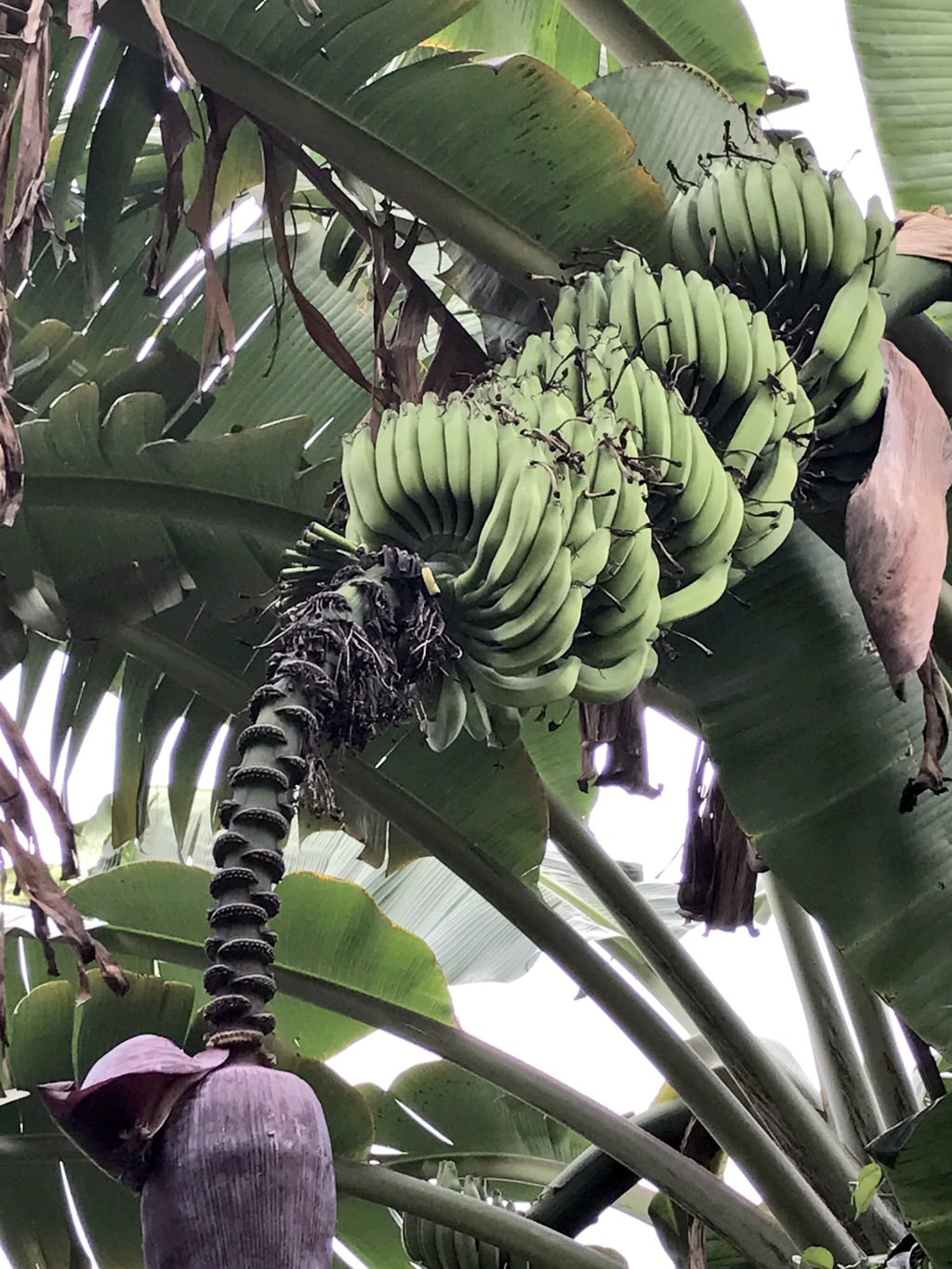
On growing bananas in my urban garden in Bangalore

Available at every street corner, relatively cheap compared to all other fruits, of course, it is easy to take bananas for granted. Growing up in Bombay, while apples, oranges and grapes used to come home by the bagfuls as and when they were in season, there would not be a day when there were no bananas in the house. This is one fruit that my grandpa used to keep as an offering after his prayer rituals (still does). So if not for us, for the sake of the gods, bananas were always there in that plastic fruit basket on top of the Godrej refrigerator.
Due to this kind of omnipresence wielded by bananas since my childhood days, I never bothered much about them. I do however buy them every week because this is one fruit my son will have with his cereal without much fussing about. Sometimes they go mushy on me. In jumps banana bread, the eternal saviour of overripe bananas. Or my favourite banana raita.
The last few months were a revelation for me. I’ll explain.
Over a year ago, my garden help got a banana sapling from her home and announced that she was going to plant it in a certain spot. She is like that, takes her decisions and then just does an FYI on me. I like that kind of pro activeness in people, as long as she doesn’t decide to sow brinjal seeds in my entire kitchen garden 😀 at which point I might quite lose it!
So yes, the banana sapling was sown.
It was a sprightly little thing, getting settled in the new environs almost immediately. The summer showers saw huge spurts of growth. The leaves turned enormous, giving a Kerala feel to my mornings as I sipped my tea admiring the grace of the banana tree.
Months later, we spotted a flower, a ruby red conical flower. My gardener informed me that the fruits are not far behind. I was going ‘be still my beating heart’
I’m not exaggerating here.
I’m a Bombay girl for whom 500 sq.ft. is the size of a decent apartment and a pot of holy basil in the box grille, a kitchen garden. The thought of growing bananas inside my house was quite unfathomable until now.
I would take note of the progress almost every single day. Each morning, I would give the tree a good long stare (albeit a doting one), as though staring hard at it would make it fruit faster. Then one day tiny fruits made an appearance, not larger than the fingers of a 2 year old kid. It took a good 3 months for these fruits to somewhat plump up.
In April and May, I had to go away for the summer vacations and I fretted to my gardener that they’ll all ripen when I’m gone and the neighbourhood monkeys will have a party at my expense. She said, “Innum neraya time irukku, madam.” [There is a still lot of time.] The bananas were plump already, surely she was offering me false solace, I thought.
Towards the end of May, when I got back home, first thing I did was to check on the bananas. Indeed, these guys were slow. The banana situation had not progressed much from where I had left them 6 weeks ago.
“How much time now? Surely they must be ready to harvest now!”
“Innum neraya time irukku, madam,” (there is still lot of time) she said, laughing at my ignorance.
This was now plowing into my non existent reserves of patience. I was worried that the squirrels who don’t leave a single pomegranate for me, are going to get bored of eating pomegranates and start coming after these bananas very soon.

I tried to focus on the other things in the kitchen garden and keep my mind off the super slow timeline the banana tree was on.
Come July and my gardener announced that, another couple of weeks and we can harvest. FINALLY!
Even after the two weeks passed, they decided to let it be on the branch for another two weeks, just in case, you know!
Meanwhile a sac was arranged for. The entire lot of bananas (vazhai kolai) was put into the sac and tied up. Another week or ten days, they said. I later read up that bananas release ethylene gas on ripening and by tying up the sac, it becomes a sort of ethylene gas chamber that enables all the bananas to ripen quickly.
After ten days, I opened the sac very gingerly. A warm cloud laced with a sweet smell hit my face. The entire top rows of bananas had turned a bright yellow and the ripening process had generated all that heat inside the sac.
After all the waiting, I had around 20 dozens of utterly sweet and delicious bananas to deal with. Figuring out how to put everything to use without them getting spoilt, was quite some work.
But first things first, photos of the banana laden dining table were sent off to Amma, aunts and cousins in our family Whatsapp group. The fact that they all ripened on an Aadi Vellikizhamai was one of the observations made (Fridays of Aadi month are considered auspicious).
The first lot I kept aside for my garden help and my house help. Next lot was put aside for my cousins who live in the same city and then some for friends. Some went into the fridge for the husband to taste them when he came back to Bangalore. And then some for home use. I still haven’t figured out what variety these bananas are. These are yellow, 3 inches long, with a sweet flesh and very thin skin. When blended into a shake, the consistency is amazing.
Each banana tree fruits only once. So the trunk of this banana tree had to be chopped off last week. The removed trunk when chopped into bits and added to the soil around newly growing banana trees provides them with the necessary potash. We have two other banana saplings growing now.
This time, I’m slightly more pro in this patience game.




Thank you for describing the banana ripening process. I had no idea that it took so long or that once the tree fruits, it won’t again. I hope one day I can see it happen in person!
Thank you for describing the banana ripening process. I had no idea that it took so long or that once the tree fruits, it won’t again. I hope one day I can see it happen in person! https://marthassecrets.com/tropical/tropical-plants/banana